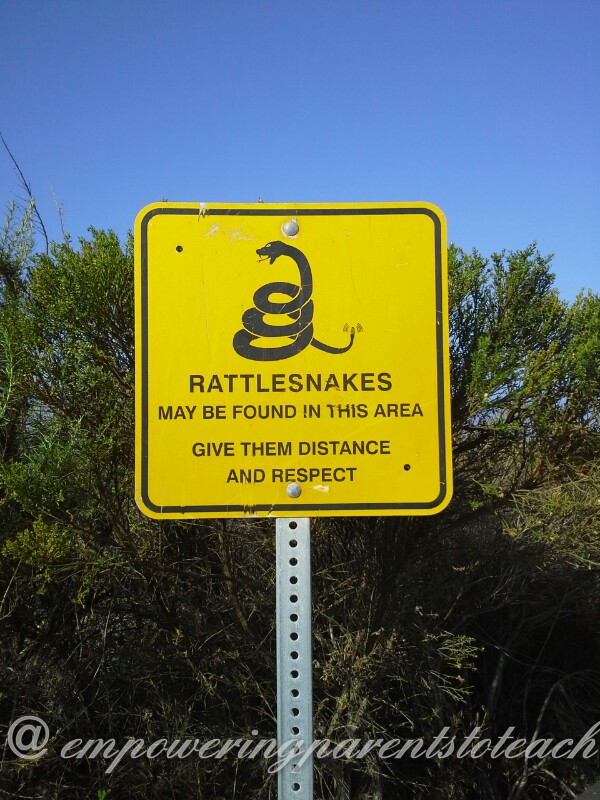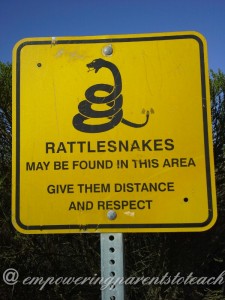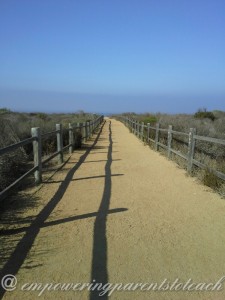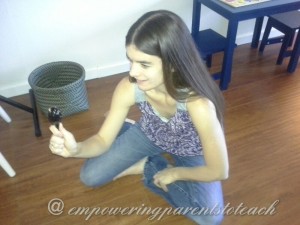Life Skills: Adapting to the Environment
You won’t find skills like this in any type of government mandated curriculum, but it is just as important! Possibly, even more important. Do our kids understand how to survive and navigate their surrounding environment? Isn’t all of this learning from school and home supposed to teach them how to become independent? Don’t forget that there is more to learn that how to add!
Do your kids know what to do when they encounter different kinds of animals that live near you? Do they know to leave raccoons alone? Does your teenage driver know to watch out for deer on the road? Or moose? Are they gentle with bugs so they don’t get squished? Have they learned not to anger a bee or wasp? And whatever you do, don’t squash a stinkbug! They list is endless and will vary based on where you live. It’s not about teaching them to fear other creatures, but how to respectfully live beside them so we all can survive.
Some animals are pretty aggressive and we teach our kids to never go near them- like alligators! Of course, I make sure my children know that it is ok to protect ourselves, we only harm an animal in self defense if that ever happens. The more they understand about animals, bugs, fish, etc., the better they can live peacefully with them, help them, and protect themselves against them if needed.
That is where our rattlesnakes come into the story. Where we live there are signs like this warning of rattlesnakes on many of our nature trails and some playgrounds. Do we avoid those places? No, we don’t, but I have taught my children about rattlesnakes and what to watch out for. These particular areas have rare encounters with the snakes. Here is what we’ve learned:
- The places we frequent have cleared paths, we are not walking through untouched growth. It is more likely the rattlesnakes live in the more “natural’ areas of the preserve or playground. Sometimes, they may be out in the open path to sun themselves.
- Snakes can sense the vibrations of our walking feet. They are more scared of us than we are of them. They will try to avoid us if they can.
- They would likely only to strike us if they felt that we were trying to harm them, intentional or not. Never go near the snake.
- If you see a hole in the ground- DO NOT try to put your finger or a stick in it! They hide in holes. I will point out any holes I see so they understand what to avoid.
- If we happen to see a rattlesnake on the trail, we do not approach it. Give it lots of room to retreat. This hasn’t happened to us yet, thankfully! But we teach the kids just in case.
- If the snake rattles his tail, he is mad and feels like he is danger. He is about to strike. This is when you know you are in real danger.
- Lastly, of course- They are poisonous. If bitten get help immediately!
Reinforcing Understanding
We have done a couple of things to reinforce our understanding of rattlesnakes and how to share the environment with them.
First, we went to a local nature park that has a rattlesnake in a glass case so the kids know what one looks like. This helps the kids identify the rattlesnake. I pointed to the rattle and reminded them that if they ever hear the rattle, they know the snake is mad and about to strike.
Second, we did some role play. My oldest son had a couple of snake puzzles. On one puzzle you see a rattlesnake in the desert. A large bird is swooping down with his talons open approaching the snake. The rattlesnake’s tail is up as if he is rattling. I explained to my son that the bird appears to be attacking the snake so the snake is trying to defend himself. He is rattling his tail to let the bird know that he is going to get him! Based on this we made up a game.
My son pretended he was the bird and I was the rattlesnake. I held a maraca in my hand to simulate the snake’s rattle. My son, the bird, would swoop at me. I would rattle the maraca pretending it was my tail’s rattle and he would pretend he was scared and fly away! We switched roles and played some more. He thought this was very fun. It also gave him a chance to act out how to respond to a rattlesnake’s rattle. And, since he also got be the rattlesnake, he could have a little empathy for the rattlesnake. He can see how the snake was scared of the bird, giving him insight into the snake’s natural instinct to defend himself like all creatures.
Finally, the library is a wonderful resource. You can find information on any type of animal. We’ve read many snake books and even watched numerous nature shows on Netflix!
Think about the animals that live near you. What can you teach your child about living together with them? Are some of them potentially dangerous? How can you teach your children to protect him or herself? It is our job to protect our kids, but we also have to teach them how to protect themselves. The best protection is knowledge!




